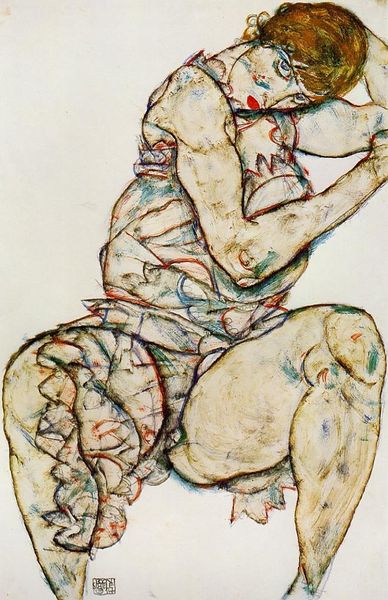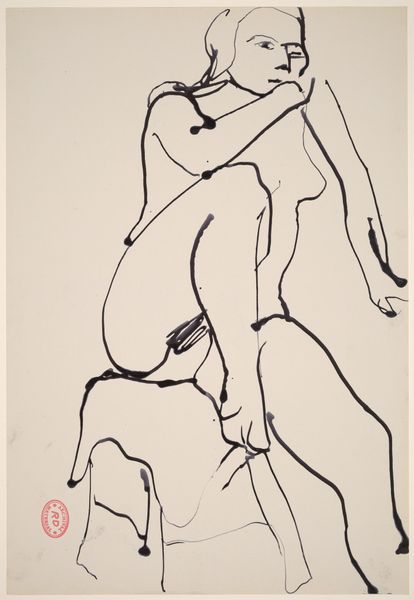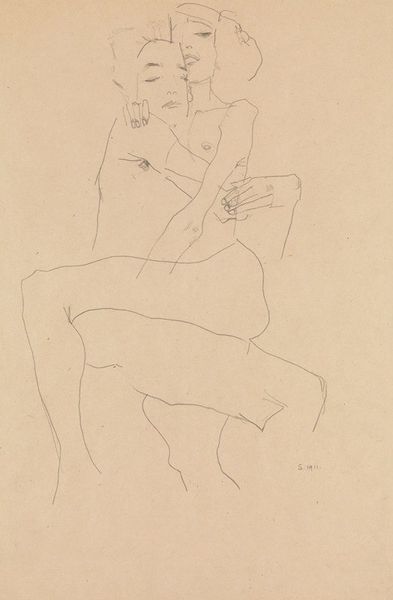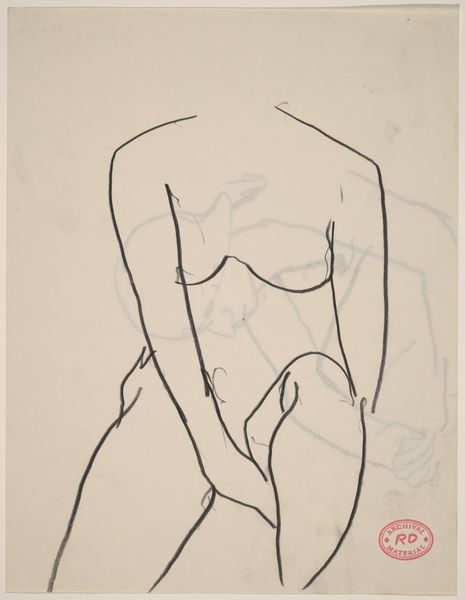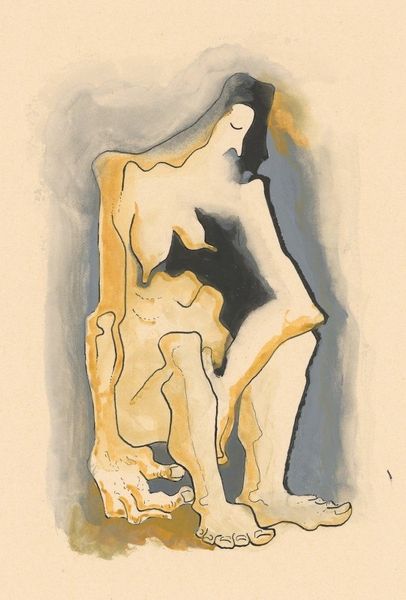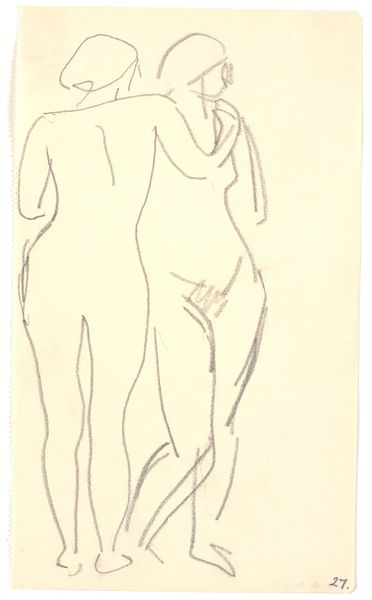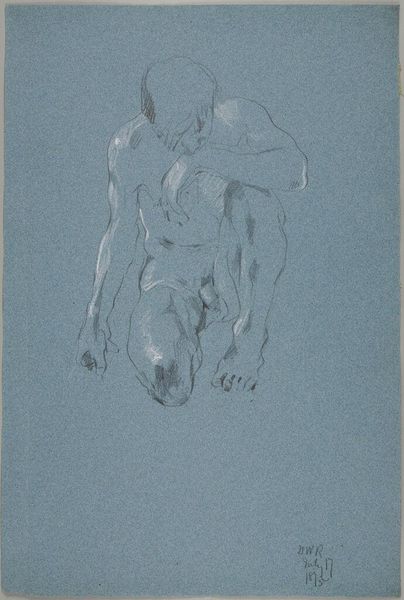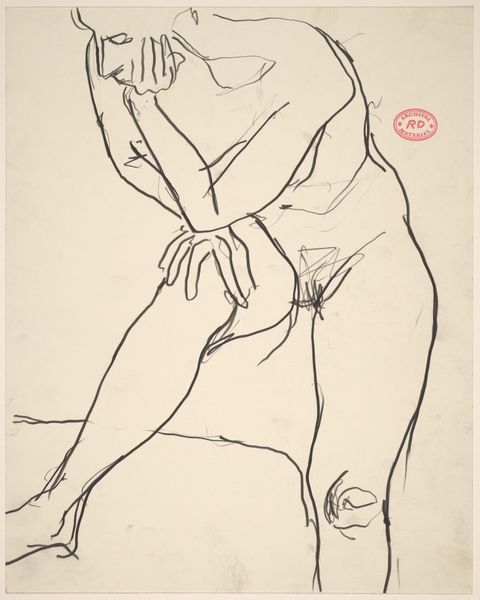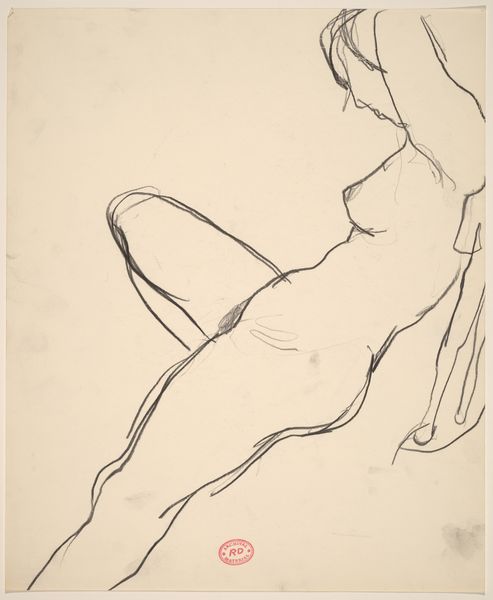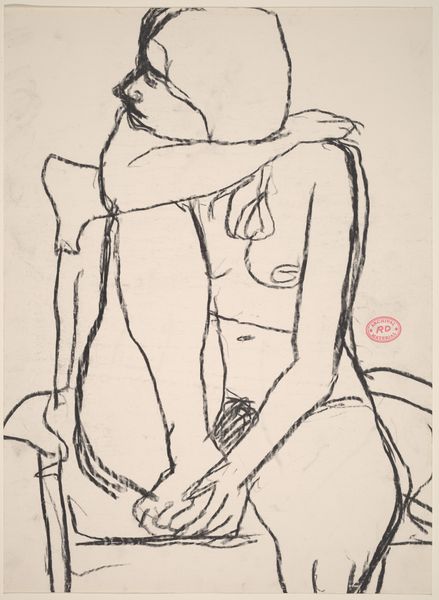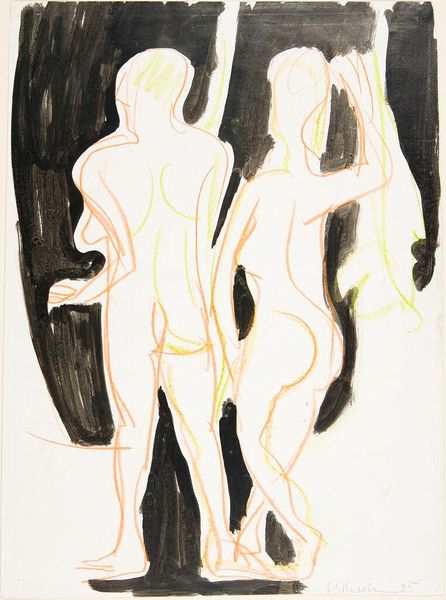
drawing, charcoal
#
drawing
#
figurative
#
self-portrait
#
charcoal drawing
#
figuration
#
expressionism
#
line
#
charcoal
#
nude
#
erotic-art
Copyright: Public Domain: Artvee
Editor: Here we have Egon Schiele’s "Naked Girls Embracing," created in 1914, a charcoal drawing that is rather intense, maybe even a little disturbing in its raw portrayal of intimacy. What do you make of this embrace? Curator: Schiele's work often challenges conventional representations of the body and sexuality. Consider the social context of Vienna in the early 20th century, grappling with Freud’s psychoanalysis and burgeoning anxieties about gender and identity. How might the figures in this drawing challenge or reinforce the power dynamics inherent in such a heavily policed eroticized representation? Editor: I see that... the figures seem vulnerable, yet defiant in their nudity. Is there a correlation here to the prevalent feminist ideals back then? Curator: Absolutely! Schiele’s art intersected with the burgeoning feminist movements of his time, especially as these figures resist idealization. They reflect a desire for authentic representation of female experience, or at least *his* perception of it. I wonder, though, whether the male gaze is completely escaped here, given that it's a male artist representing female bodies. What do you think? Editor: I do notice how Schiele uses line and form to expose a raw, unidealized vision. The lack of distinct facial features almost abstracts the women to stand as one, symbolizing universal vulnerabilities and/or strengths of females in that era. Curator: Precisely. We must consider the gaze—who is looking and from what position of power—to interpret this artwork fully. Also remember the Expressionist style used and the psychological themes often touched in his work. Editor: Thinking about the artwork like that sheds new light on Schiele’s work beyond just shock value. I will always look beyond face value now! Curator: Excellent. Keep digging into the context, asking critical questions about representation, power, and identity, and you’ll unlock even richer understandings of art's place in culture and society.
Comments
No comments
Be the first to comment and join the conversation on the ultimate creative platform.
